40th CAB rescues nearly 400 stranded by Creek Fire
First responders work hand-in-hand with California National Guard
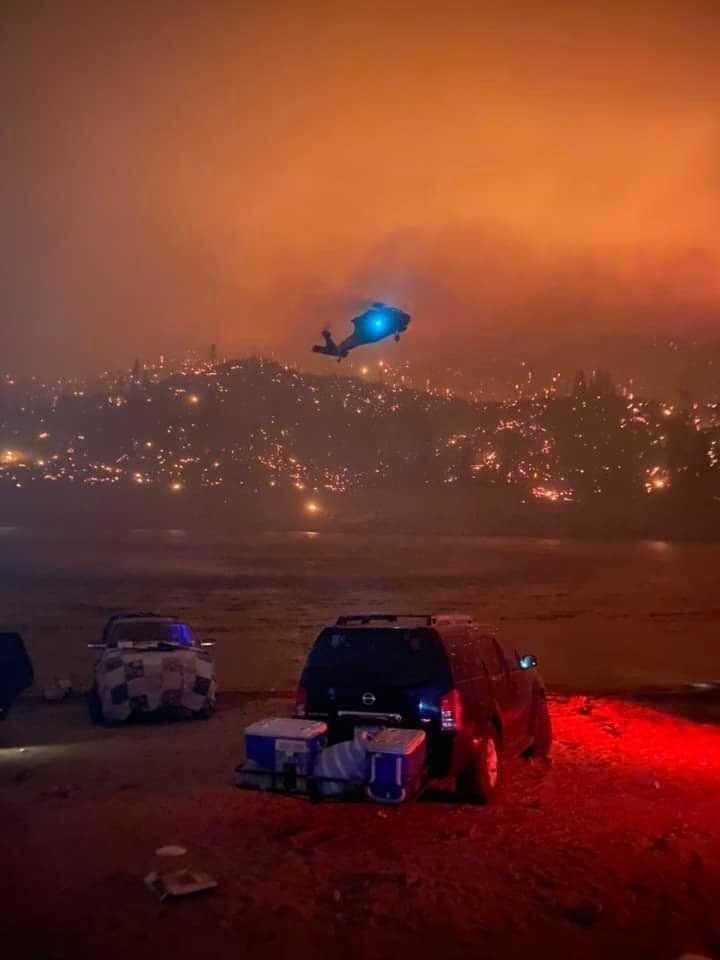
by Sgt. 1st Class Ryan Sheldon
California National Guard Public Affairs
Sept. 11, 2020
FRESNO, Calif. – On Labor Day weekend, several hundred people found themselves trapped in the Sierra Nevada mountains in Fresno and Madera counties as flames from the enormous Creek Fire surrounded them.
On Sept. 5, into the early morning hours of Sept. 6, and again on Sept. 8, pilots and aircrew members from the California Army National Guard’s 40th Combat Aviation Brigade flew in and evacuated them to safety. In all, 396 people and 27 animals were rescued over two days in treacherous flying conditions.
When personnel from the brigade received the initial call for an emergency evacuation, none hesitated.
“I was at my mom’s house in Merced about to jump in a pool to cool off with my son,” said U.S. Army Sgt. George Esquivel, a CH-47F Chinook mechanic and flight engineer with the brigade's Bravo Company, 1st Battalion, 126th Aviation Regiment, based in Stockton. “I received a text about a rescue mission asking if I wanted to go and I replied yes. I don’t turn down the opportunity to go on rescue missions because it’s what we do.”
For Col. David Hall, the brigade's commander, there was no question whom he would need to call in order to complete this mission.
“I saw an announcement about a fire near Mammoth Pools via social media,” Hall said. “I contacted the Joint Operation Center in Sacramento to see if they heard anything about it. After that was confirmed and I knew a CH-47 crew was in the works. I immediately called one of the senior pilots in Fresno, Chief Warrant Officer 5 Kipp Goding, and asked him to assemble a UH-60 crew and let me know when he was ready to go out and assist at Mammoth Pools.”
Assigned to the Mammoth Pool Reservoir mission were a UH-60M Black Hawk helicopter and a CH-47F Chinook helicopter. The Black Hawk was flown by Goding, the pilot-in-command, Chief Warrant Officer 2 Irvin Hernandez, pilot, and Warrant Officer 1 Ge Xiong, the helicopter's crew chief.
The Chinook was flown by Chief Warrant Officer 5 Joseph Rosamond, pilot-in-command, Chief Warrant Officer 2 Brady Hlebain, pilot, and flight engineers Esquivel and Sgt. Cameron Powell.
The two aircraft prepared to launch that evening.
“I started the preflight inspections to prepare our aircraft for the evacuation,” said Hernandez, with Detachment 1, Bravo Company, 1st Assault Helicopter Battalion, 140th Aviation Regiment. “Once we were able to establish communication with CAL FIRE, we headed into the designated point right behind the CH-47F Chinook crew.”
The pilots, crew chiefs and flight engineers were familiar with wildfire missions, but the combined effects of limited visibility from darkness and the heavy smoke, extreme heat, and the use of night vision goggles made this mission especially difficult.
“I can’t really describe my initial reaction because training just kicked in,” Esquivel said. “One of the first things that we all agreed on was we need to put the aircraft down safely. Without the aircraft and the crew being safe, there is no mission and we can’t help anyone out. Our job was to make sure we landed. When we did land, I was met with the worst sight of my life. A lot of people referred to the sight as apocalyptic, and I agree.”
Flames were all around. More than two hundred people at Mammoth Pools needed immediate evacuation.
“We saw the Chinook crew loading up passengers and hovered above them until they were complete,” said Hernandez. “Every opportunity that we had to go out and rescue people, we had to choose a different route to enter from because the winds were shifting every time we went out.”
“On the first lift, we had 65 people that we boarded onto the aircraft,” said Esquivel. His CH-47F is a big dual-rotor, heavy-lift aircraft designed for carrying about 30 people. The campers, hikers and area residents crammed inside and sat on the floor. “Sgt. Powell and I focused on the critically injured, women and children. On the second lift, it was 102 people and the third lift it was 37.”
On one of the flights, Esquivel noticed an infant. His fatherly instincts kicked in.
“I thought of how loud it was going to be and I said to myself I need to get this baby some hearing protection. I wouldn’t have been able to live with myself if I had put this child on an aircraft without hearing protection,” said Esquivel. “We had an extra headset available and I gave it to the mother of this child and told her to cover the child’s ears until we land, and she did.”
Communication and the professionalism of the brigade's Soldiers were critical during the mission.
“The communication between us and the Chinook crew was perfect,” said Hernandez. “Communication between the two aircraft was in sync and that was part of the success of this mission.”
As helicopters full of people flew to Fresno, brigade personnel prepared the flightline for emergency services personnel. Rosamond radioed from the air to advise emergency services.
“I heard chatter over the radios that they were heading to Fresno,” Hall said. “When I heard that, I immediately dropped what I was doing and I headed there because I was anticipating a mass casualty scenario. On the way here, I contacted the flight operations section in Fresno and informed them they need to give emergency personnel a heads up and let them know that an unknown number of passengers will be arriving.”
Emergency Medical Services and Fresno law enforcement agencies set up a check-in and screening process and determined if passengers needed medical care. Additional Soldiers from the brigade and from the 1106th Theater Aviation Sustainment Maintenance Group assisted with screening and set up cots in case passengers needed a place to rest until they were picked up by other family members.
That night, 242 people were rescued from Mammoth Pools.
“I believe our training came into play with this mission. My situational awareness and senses were heightened for the whole time,” Hernandez said. “We appreciate the praise that we’re getting, but we’re not a godsend or special people. We’re just ordinary people that did our job. This is what we do and we love it.”
After the first night, visibility became so poor from the smoke that helicopters could not land to make more rescues. On Sept. 8, the smoke cleared enough for brigade helicopters to evacuate another 175 people from China Peak, Lake Edison and Muir Trail Ranch.
By the end of the week, the urgency to rescue people from threatened areas ended and the brigade transitioned to its normal role assisting CAL FIRE by dropping water on active fires.
“When you’re training, take it seriously,” Esquivel said, speaking on the success of the rescue missions. “My father always told me, there is a time and place for everything. When it’s time to go to work, it’s time to focus and go to work. We could have easily said no to this mission because of the dangers, but something within us was saying, no, we’re ready, go on ahead.”
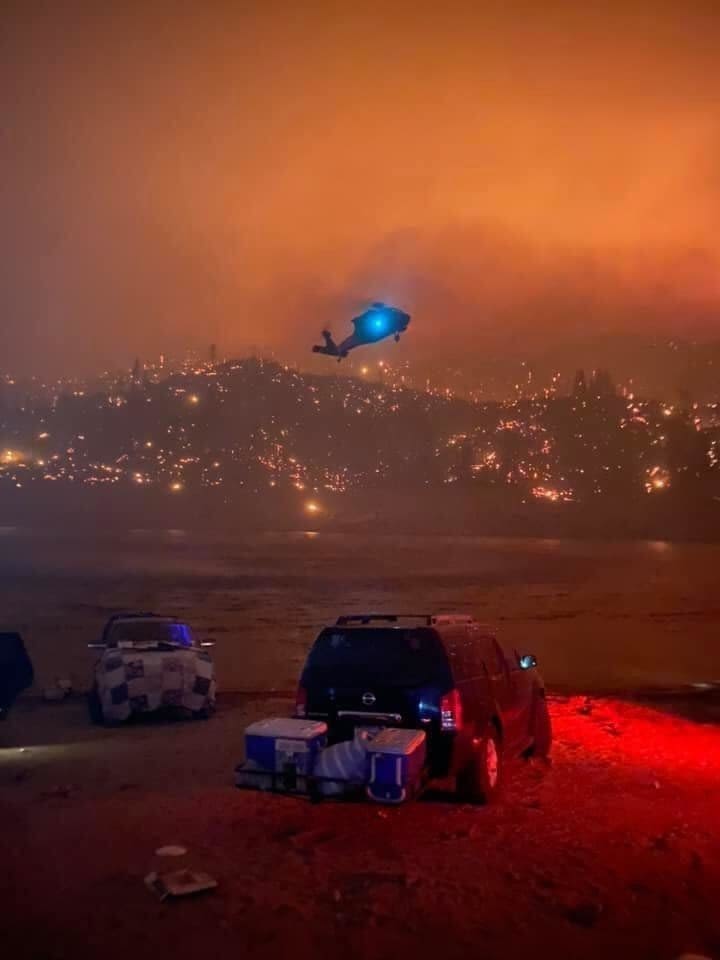
California Army National Guard UH-60 Black Hawk helicopter lands to rescue campers, Sept. 5, 2020.
California Army National Guard UH-60 Black Hawk helicopter lands to rescue campers, Sept. 5, 2020.
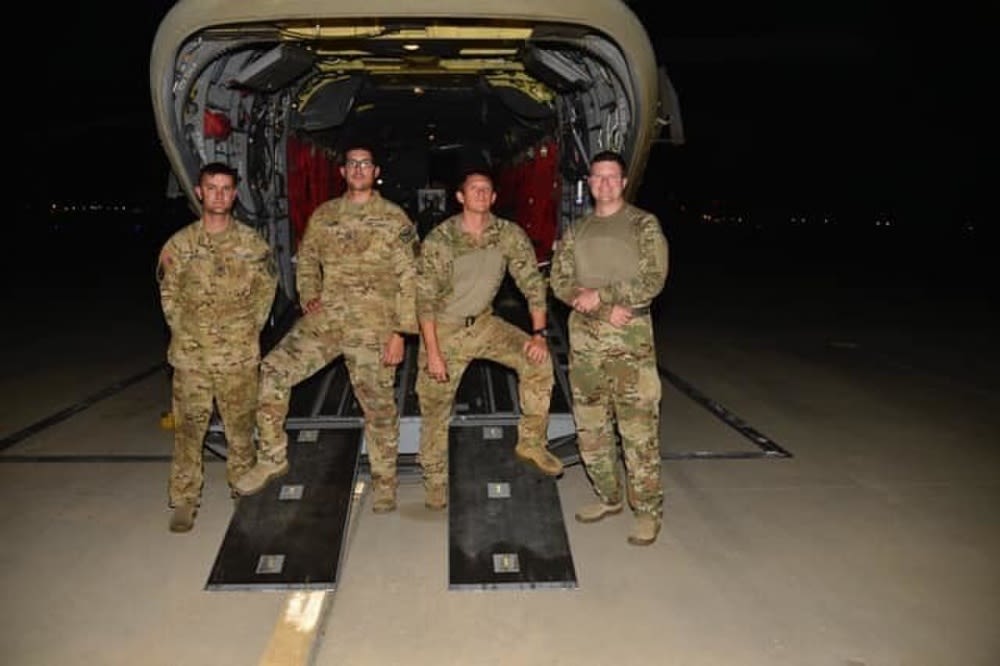
CH-47 helicopter aircrew stands by their aircraft before heading to the Creek Fire.
CH-47 helicopter aircrew stands by their aircraft before heading to the Creek Fire.
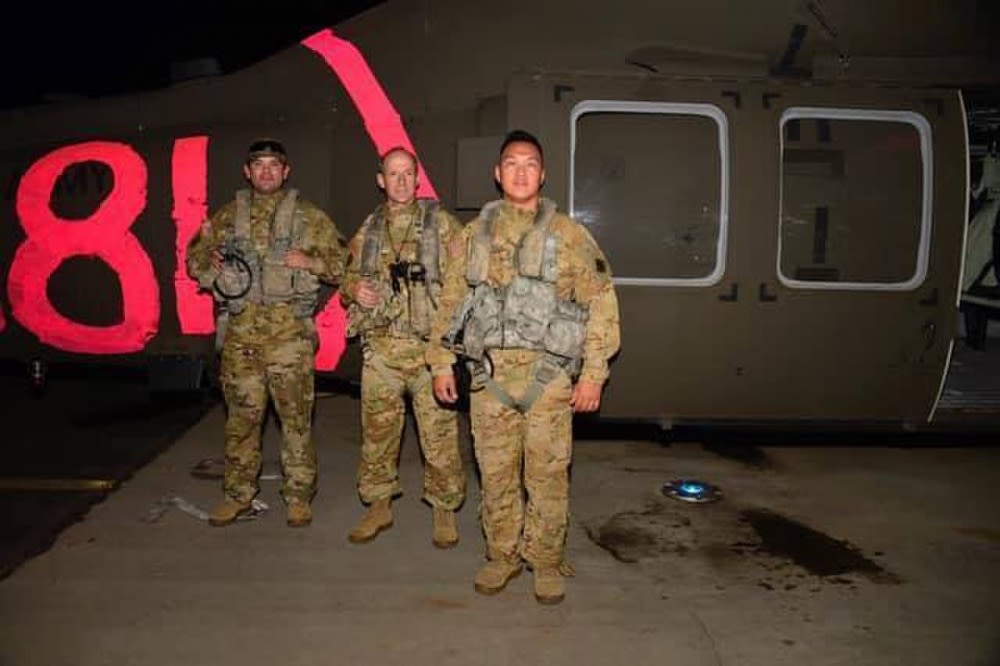
UH-60 Black Hawk aircrew members Hernandez, Goding and Xiong.
UH-60 Black Hawk aircrew members Hernandez, Goding and Xiong.
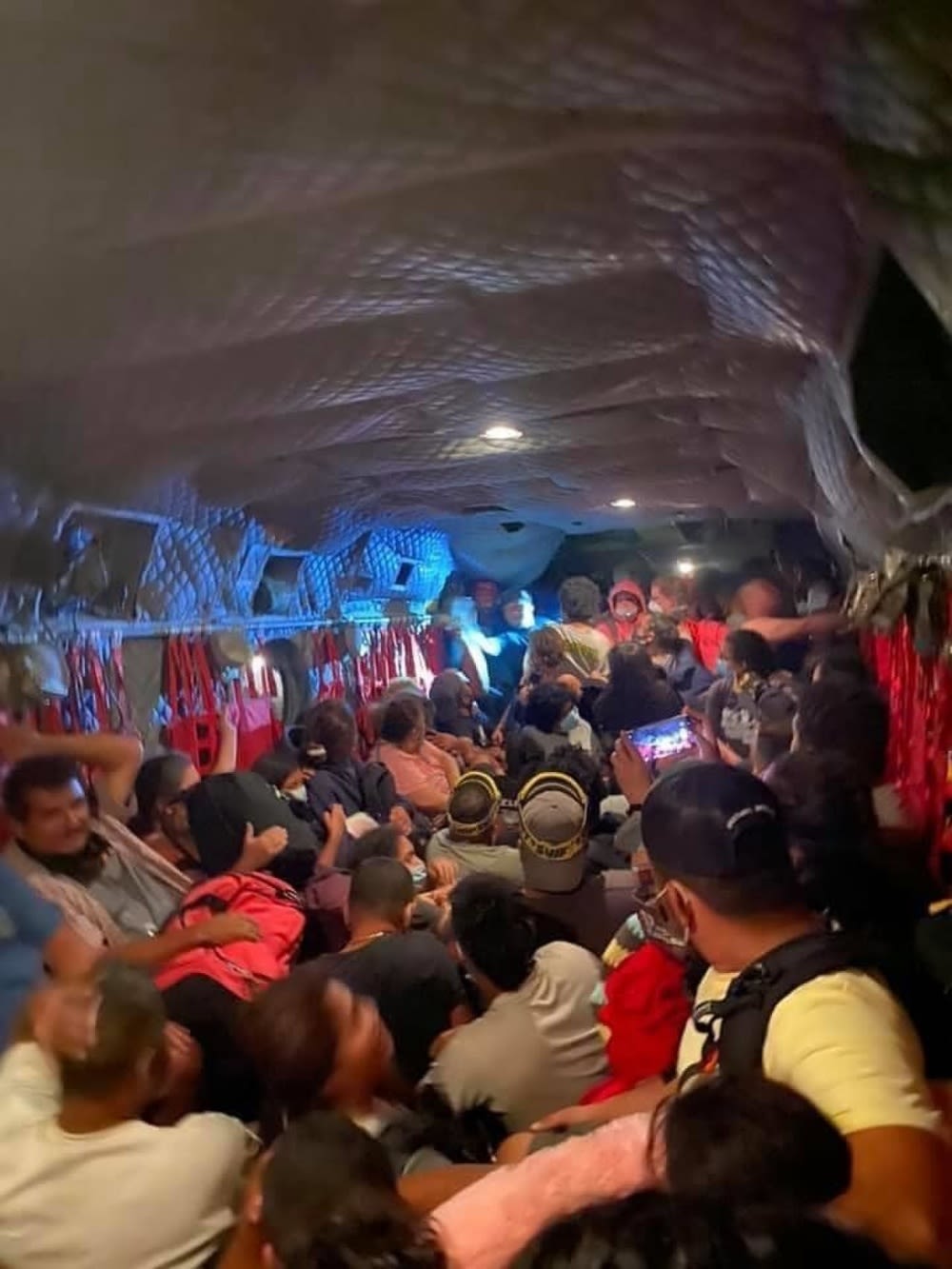
Evacuated campers and hikers packed into a Cal Guard CH-47 Chinook to flee the flames of the Creek Fire.
Evacuated campers and hikers packed into a Cal Guard CH-47 Chinook to flee the flames of the Creek Fire.
“We could have easily said no to this mission because of the dangers, but something within us was saying, ‘No, we’re ready, go on ahead.’”
– Sgt. George Esquivel
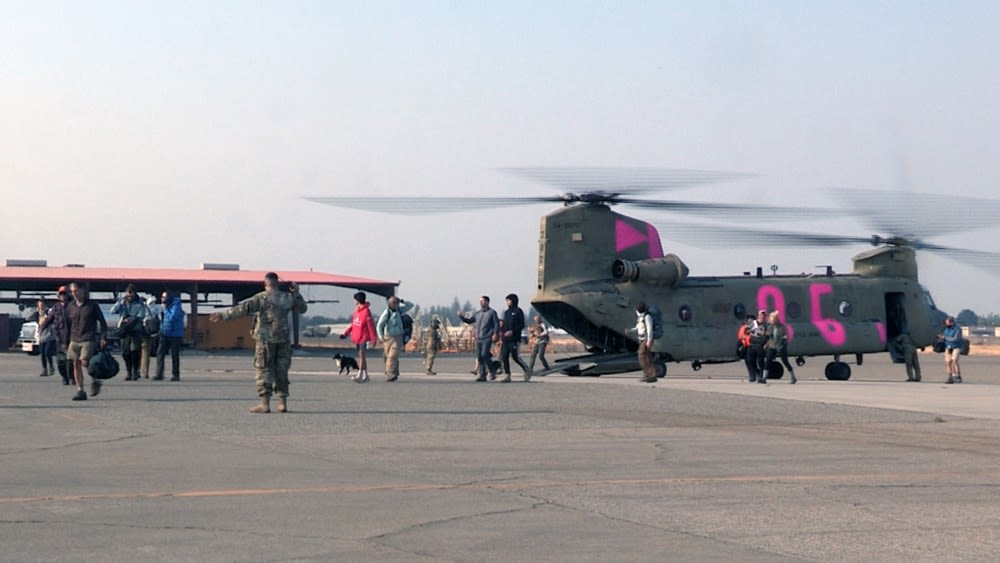


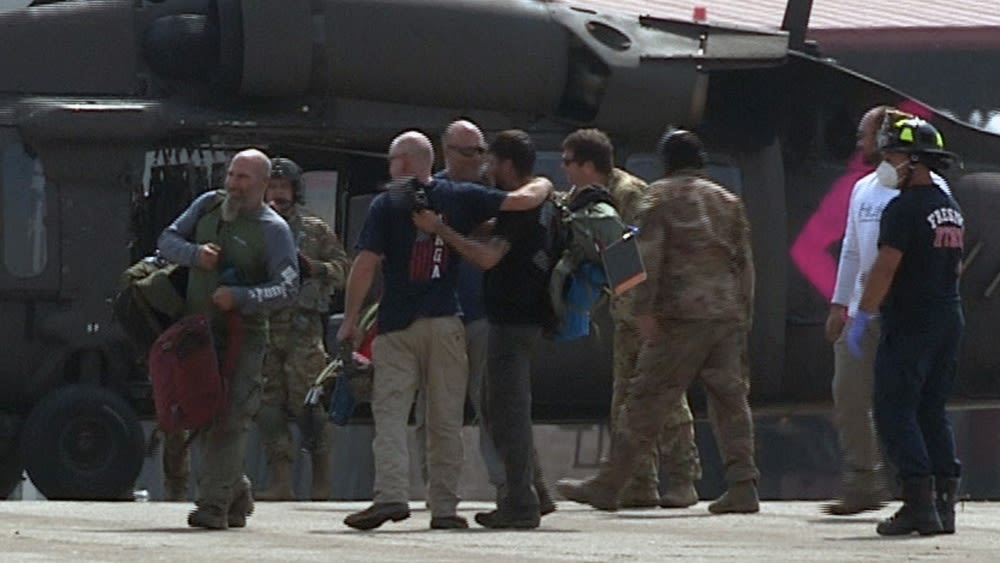

Evacuees disembark a UH-60 Black Hawk helicopter after fleeing flames from Creek Fire.
Evacuees disembark a UH-60 Black Hawk helicopter after fleeing flames from Creek Fire.

Evacuees disembark a CH-47 Chinook in Fresno, Calif., after fleeing the Creek Fire.
Evacuees disembark a CH-47 Chinook in Fresno, Calif., after fleeing Creek Fire.

Evacuees embrace each other once they land in Fresno, Calif., after fleeing the Creek Fire.
Evacuees embrace each other once they land in Fresno, Calif., after fleeing the Creek Fire.


